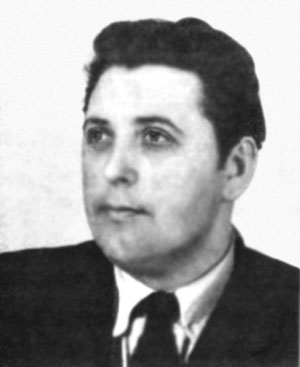 Sergey Evdokimov
Sergey Evdokimov
A graduate of the Leningrad Institute of Municipal Construction Engineers (now SPbGASU), architect, associate professor at LISI (now SPbGASU) Sergey Evdokimov (1911–1972) devoted his entire life to serving his hometown: in peacetime, he designed significant objects and taught, and in wartime, he built defensive structures.
Sergey Evdokimov was born on 17 October, 1911 on Vasilievsky Island. Years will pass, and it is here that he will develop his activities as an architect. He will develop standard projects, street plans and city blocks, in particular, the city's sea facade. But this will be after the city has withstood the onslaught of the enemy during the Great Patriotic War.
Several years before the war, Sergey Evdokimov managed to become the author of significant buildings and projects. According to the memoirs of his contemporaries, in those years young architects grew very quickly and immediately found their place in the profession. Already in his student years, the future architect drew the city in order to feel the environment in detail, took measurements of facilities. As part of his diploma work, he designed the Youth Palace. The project was highly appreciated by its director, the leader of Leningrad innovative architects Aleksandr Nikolsky. As a specialist at the Lenproekt Institute, Sergey Ivanovich was engaged in standard design, planning of blocks, but his main work of those years was the design and construction of the Ivanovskaya Street ensemble in collaboration with architects Evgeny Levinson and Igor Fomin. The perfection of the lines and classical execution of the project is comparable to the Architect Rossi Street ensemble.
The architect worked in Leningrad throughout the war: he built defensive structures on the approaches to the city, did camouflage work, served in a communications regiment, and put out fires.
At the end of 1945, he returned to his native Lenproekt. Thanks to his active professional work, many new buildings appeared in the city that was reviving after the war. The author of the book "Architects of St Petersburg of the 18th-20th Centuries" Valery Isachenko lists a number of the architect's projects. Thus, in 1946-1952, the State Optical Institute named after S. I. Vavilov was built on Birzhevaya Liniya, 12-16. Later, work began on the project for the planning and development of the seaside part of Vasilievsky Island. In 1953, Sergey Ivanovich became the head of the 12th workshop of Lenproekt. Among the works of this time were the second stage of the stadium named after S. M. Kirov, the rowing canal in the Primorsky Victory Park, the swimming pool of the Institute of Physical Culture named after P. F. Lesgaft, the Nekrasovsky and Nevsky markets. The architect’s famous projects include the underground halls of the Gorkovskaya (1963) and Elektrosila (1961) metro stations.
The largest project was the Pribaltiyskaya Hotel. The SPbGASU students have the opportunity to live in a dormitory on Fontanka, 123, which building was also designed by Sergey Evdokimov. This facility seemed to be a gift to the native university from a grateful graduate.
Other materials of the "Scientific Regiment" project
Our Graduate Built the Road of Life
Front Line of the Architect Aleksandr Nikolsky
Researcher who Developed Science in Besieged Leningrad
Fights of Student Klinov
Engineer of the 3rd Belorussian Front
Nineteen-Year-Old Gunner Stormed Berlin
Path of a Volunteer: from Front-Line Roads to Space Development
Ivan Solomakhin: "The Most Memorable Battle was for this Devil's Hill!"
Fiery Dnieper of the Hero of the Soviet Union Aleksandr Prygunov
Approaching to the Victory
Fedor Komal's Front: from the War Start to the Victory
Junior Political Instructor Boris Gubanov: “Shells Were Whizzing, and the Ground Took off Nearby”
Viktor Kvyatkovsky, Radio Reconnaissance Operator of the Baltic Fleet
How the Chief Architect Nikolai Baranov Kept Leningrad "Hidden" from the Enemy
Architect Nikolai Khomutetsky: Four Years at the Forefront
Semyon Shifrin Thwarted Nazi Plans to Leave Leningrad Waterless
LISI in the Post-War Years
LISI Graduate Mikhail Zherbin, Design Engineer and Composer
Abdulla Mangushev: Four Years at the Front and the Whole Life in Science
Architects Zazerskys Built and Defended the City on the Neva River
Worked His Way Up From a Lieutenant Technician to the Galaxy of Mathematicians
Konstantin Sakhnovsky: From Cadet Of the Russian Empire to Academician of the USSR
Military Architect Of The Front Line Defense And Engineering Intelligence
World-famous scientist, outstanding engineer and national champion
An Outstanding Urban Planner Who Lived And Worked In Besieged Leningrad